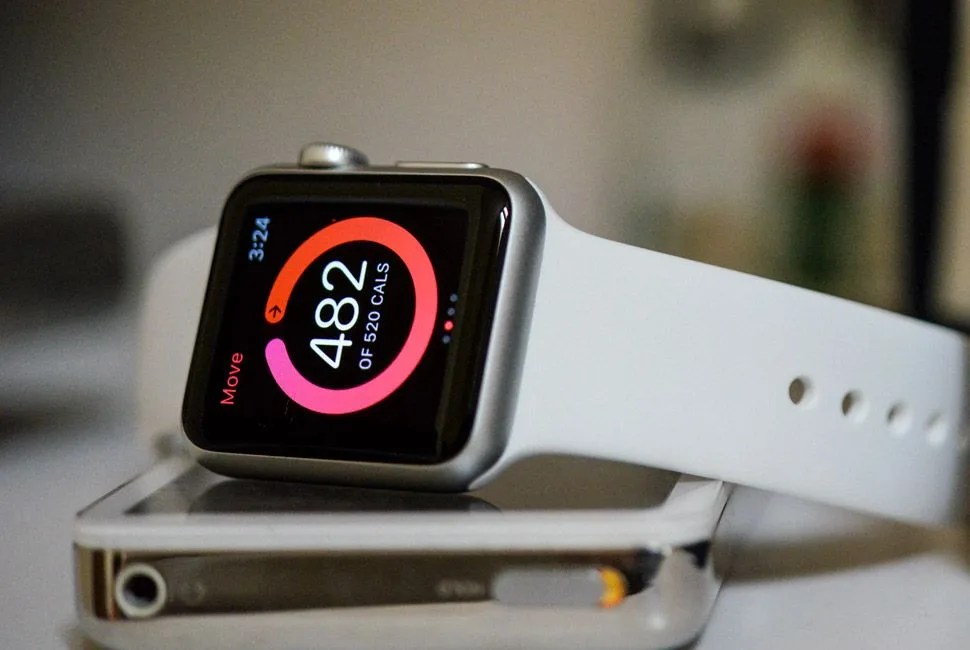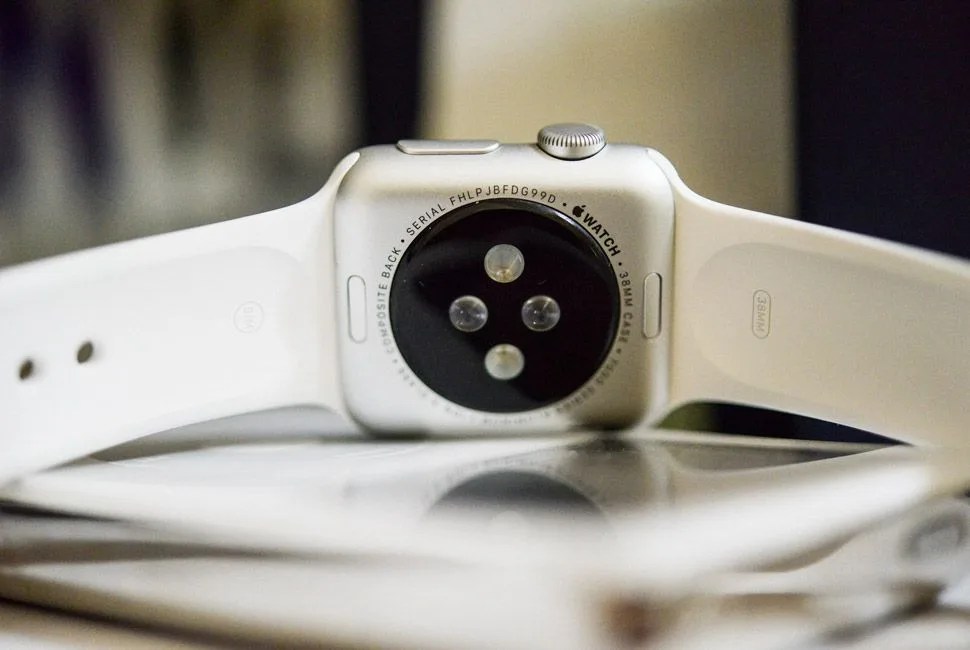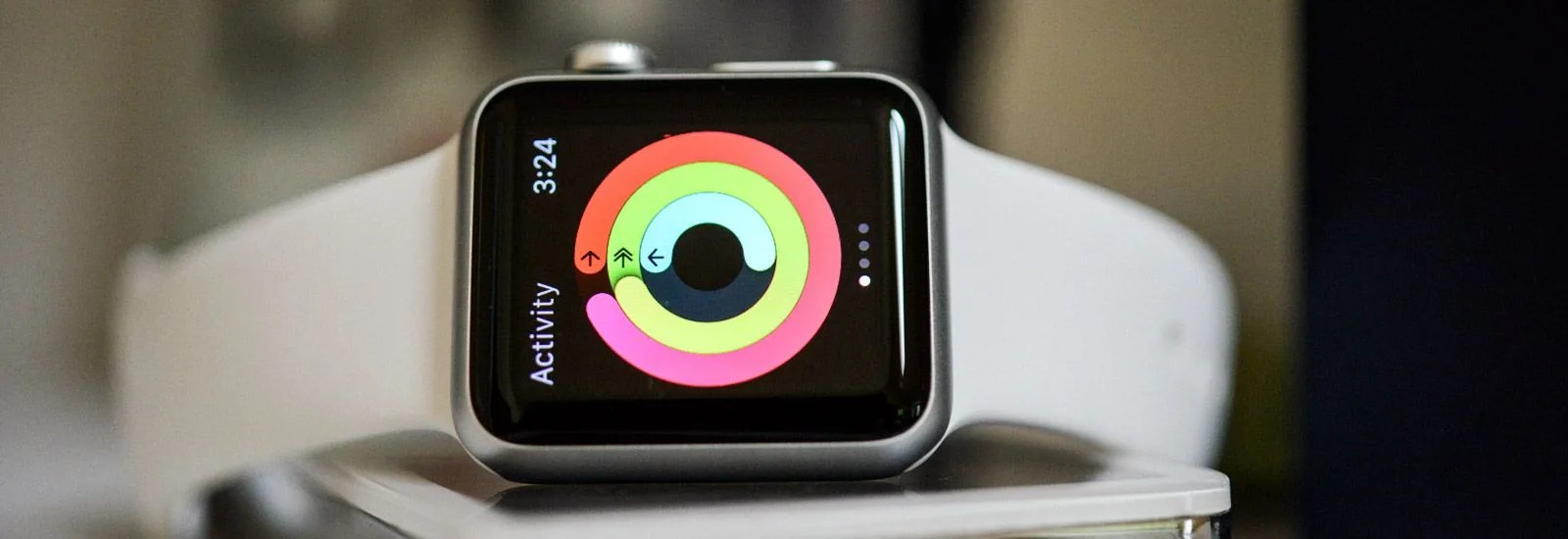Apple Watch also doesn’t report out your minimum and maximum heart rate. After a session in the Workout app, you’ll see your average, but not your maximum. For those in training, this is vital information that’s missing. Additionally, I feel that the sensor doesn’t poll quickly enough. I understand that it’s a major battery drain, but I’d prefer an option that forced the Watch to continually track my heart rate through a 30-minute session regardless. Sure, I could use a chest sensor to do that, but I hate the feeling of a chest sensor around my body, and I’d prefer the data be gathered from my wrist.
It’s not great at parsing out workouts. Apple’s first-party Workout app is an ideal one to use, as it seamlessly dumps data into Apple’s Activity app, which becomes a go-to archive of exactly what you did from day to day. In Activity, you’re able to see when you exercised, how often you stood throughout the day, how many active and passive calories were burned, and what “achievements” you’ve acquired. The problem is that there’s no way to alter what types of workouts are listed. So, for example, if you tackle the “Plyometric Cardio Circuit” video in Insanity on a Thursday, you’re forced to label it as “Other”. A month from now, will you remember that you did that specific routine on that specific day? No. Most folks won’t care about tracking things that granularly, but athletes and those training for a specific event most certainly will.
It’s not tremendously useful for intervals. For those who exercise in intervals, or who otherwise inject resistance into their routines, the Watch will let you down. Here’s an example: even with Apple Watch tight against my wrist capturing accurate heart rate readings, it continually estimated that I burned between 290 and 320 calories during an Insanity session. Which is off, badly. The average male of my height and weight burns nearly twice that in reality, and can burn more if they really crank through the intervals. I’d actually be willing to live with that if Apple’s Workout or Activity app allowed me to go in and edit the data afterwards, but as of now, you can’t. Think about it: if you could create your own list of canned routines and add it to the list available to you on Watch, you’d be able to more accurately tally up the total calories burned in a day. If these were available as a global, searchable database, it’d be even better.
It’s not set up as an open API. Apple’s first-party Workout and Activity apps should be open APIs. It’d be pure magic if data from Workout and Strava and any of Nike’s apps were able to flow seamlessly between one another, and it wouldn’t be that difficult to make happen. This could, in theory, allow your calorie intake that’s tracked in one app to be fed into the Apple Workout app, which could then be used to report a calorie deficit (as an example). More granularly, these apps would work together to notice that on days where you spend an hour under the weight bar, you may need to consume more of one thing and less of another to make the most of your workout. As it stands, nothing talks to anything, which significantly limits how powerful the data can be. Or, the Weather app could notice that it’s likely to start raining at 10:00 a.m. tomorrow, which is when you’ve accomplished your last 14 runs — the night before, a little notification saying as much could persuade you to get up earlier than usual and get it in before the rain.
Coming Full Circle on the Watch
After a week of exercising with Apple Watch, one thing became clear: this isn’t a fitness tracker built for fitness fanatics. The shame of it, really, is that it could be. The technology is largely here, but the software is designed for the masses, and there aren’t any hidden “advanced” options to tap into. To Apple’s credit, it has done a commendable job creating its very first fitness device. Given that fitness isn’t a necessary part of any watch, it’s worth praising the fact that Apple included any of this at all in a first-generation wearable. But, as we critics do, we always long for more.
Part of the allure here is owning a single device that tells time, alerts you of notifications and triples as a fitness tracker. Fewer bands equals more bliss. If you consider that most fitness bands worth their salt are priced at around $200, the $349 base price on the Apple Watch Sport is actually quite competitive. For casual exercisers that lean most heavily on cardio routines, the Watch is perfect. It’s easy, it’s non-threatening, and it’s motivating.





